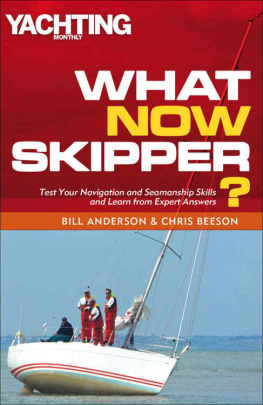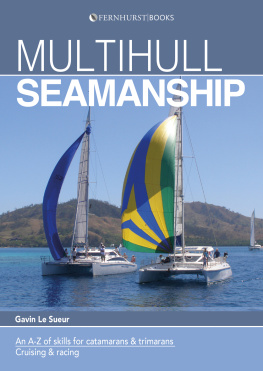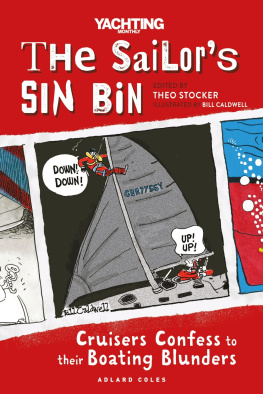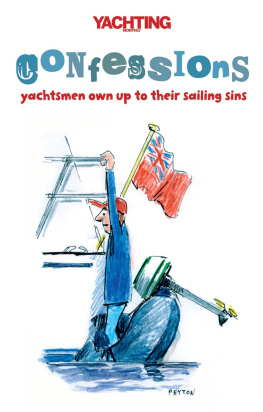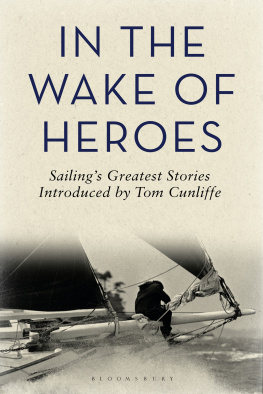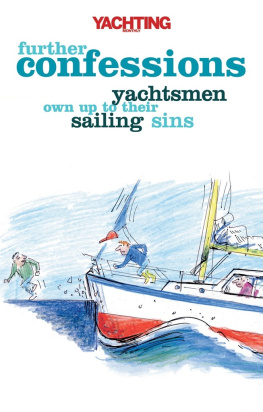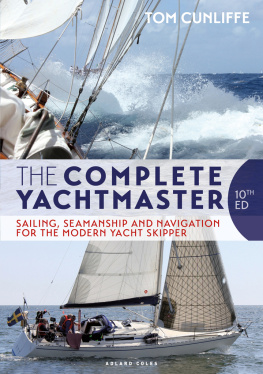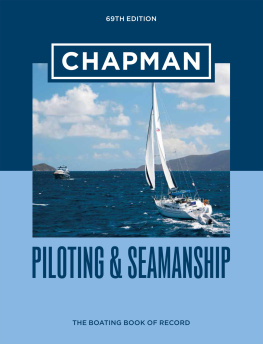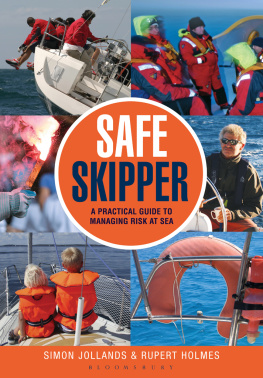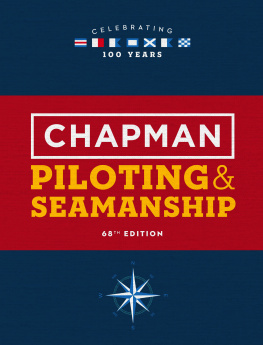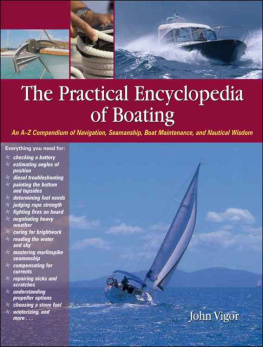
WHAT NOW SKIPPER?
BILL ANDERSON & CHRIS BEESON

CONTENTS
01
A FRIENDLY OFFER?
Q Nick doesnt like fore and aft mooring buoys. He finds them difficult to pick up and, once secured, they seem to put very heavy loads on the mooring lines, particularly with the tidal stream from astern and a crosswind. Having read in the sailing directions that the only mooring option in Chausey Sound was between fore and aft buoys, he was thinking about giving up the plan for an overnight visit to the islands southeast of Jersey. His crew had heard that this was a magical place though, and persuaded him that, as it was neap tides and no more than a Force 4-5 forecast, it would be a shame to pass them by.
As it turned out, there was plenty of room on the moorings and, with the help of smart work from the crew, Nick picked up a suitable pair of buoys without a problem. The wind had been light when they arrived and dropped to nothing overnight so his worry about strain on the deck cleats and mooring lines was ill-founded.
The following day he planned to leave through the shallow northern end of the Sound, which meant waiting until mid-afternoon for sufficient rise of tide and a favourable stream. By lunch the wind had built to the promised Force 4-5 from the northeast, right abeam, and the heavy warp risers from the buoys were leading to windward at quite a shallow angle.
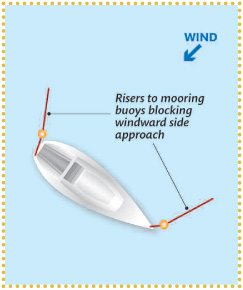
After lunch an elderly couple onboard a French yacht, slightly smaller than Nicks, were having considerable difficulty mooring to a pair of buoys across the Sound. They made good approaches but just didnt have the strength or agility to get their warps onto the buoys before the wind blew them out of reach. After their fourth unsuccessful attempt, Nick took pity on them. He hailed them, explained that he was planning to leave in a couple of hours and asked if they would like to come alongside.
His offer was accepted without hesitation and with obvious relief. The Frenchman put plenty of fenders over his starboard side and lined up to come alongside Nicks port side. It was soon apparent that he wasnt going to make it as the cable from the aft buoy was blocking his approach. The Frenchman also spotted the problem and hauled off to port, asking if he could come alongside Nicks starboard side instead.
At this point, Nick silently curses himself for his friendly offer but he can hardly withdraw it. If the Frenchman comes alongside to leeward it presents Nick with a devil of a job to leave. Hell have 18 knots of wind blowing him onto his new neighbour, the risers from the buoys blocking his route out ahead and stern and no appreciable tidal stream to help lift him clear.
At least his French and the Frenchmans English are good enough to allow reasonable communication. As long as he keeps things simple, he should be able to come up with a sensible solution.
What would you do?
A One solution might be to allow the Frenchman to come alongside to leeward and, once he has secured, to wind the boats so that Nick finishes up on the leeward side. It would need many metres of rope and much heaving and hauling. It could put a considerable strain on the bilingual communication but it would be possible.
A more elegant solution would be to invite the Frenchman to stop his boat parallel to Nicks but far enough upwind to clear the buoy risers on the approach, then let the wind bring him alongside, more or less parallel. There is a risk that the Frenchman will get the manoeuvre slightly wrong and the bow or stern will pay off first, resulting in a rather ugly contact between Nicks topsides and a sharp corner of the French boat.
However Nick has watched the Frenchmans boat-handling and has no reason to doubt his ability it is only his lack of agility and brawn that has prevented him from picking up his own pair of buoys. Given the French skippers agreement and plenty of well-placed fenders on both boats, it should be worth a try.
02
DONT SPILL THE CREW
Q The only really comfortable sea berth in Peter and Alices boat is the starboard saloon berth. Peter had always believed that this was why north-bound cross-Channel passages always seemed easier than south-bound. The wind is usually westerly so the off-watch crew simply flops into the bunk without the need to rig and then climb over a lee cloth, and Peter always slept better knowing that he didnt have to negotiate a lee cloth to come on deck in a hurry. Tonight though, its comfort causes a dilemma.
Peter and Alice cast off and headed north back across the Channel just before dark. With the wind just slightly north of west, they would be close-hauled for at least the first few hours to clear the shipping channels. When Peter came on deck to take over the watch at midnight, a line of east-bound ships was already visible ahead. An hour later, he realised a trawler was weaving to and fro about half a mile ahead with a mean course more or less parallel to their own but with frequent heading alterations. About three miles off their port bow, the lights of a ship were closing on a steady bearing. There were several other lights visible but none looked likely to pass close.
As the stand-on vessel he was obliged to maintain his course and speed until it became apparent that the approaching ship wasnt taking appropriate action to keep clear. He decided to keep going until the ship had closed to about a mile. If she was still holding her course and speed and closing on a steady bearing, then he had a problem.
Peter considers his options. If he bears away onto a parallel course, hell be sailing dead downwind and giving away valuable ground to leeward, which goes against his instincts as a seaman. Also, with the relative speed of his own boat and the ship reduced, its going to be a tediously long time before he can resume his northerly course. To turn to port he would have to tack, which would tip Alice out of her bunk and he didnt want to wake her.
Perhaps he could just pinch a little? That would cut his speed and allow the ship to pass ahead. Or he could hold his course and ease the mainsheet, which would have much the same effect. Tacking would definitely be a bad idea there is, he remembers, something in the COLREGS that advises against an alteration to port by the stand-on vessel but neither does he want to bear away.
The ship is now, he judged, just under a mile away. Her bearing remains obstinately steady and the aspect of her lights is exactly the same as when he had first sighted her. Time for action.
What would you do?
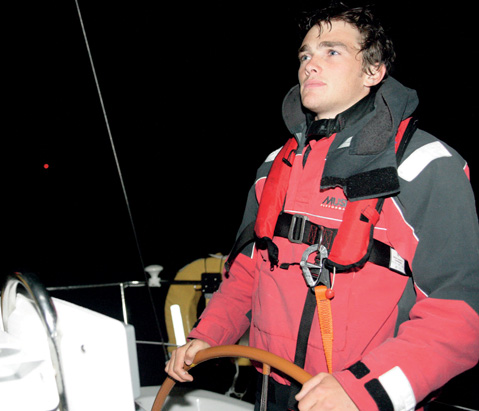
A Peter has left things a little late, at this stage there really is no elegant solution. About 15 minutes earlier, when it was becoming apparent that he might have to alter course, he could have gone below and put Alices lee cloth in place, leaving all his options open and keeping Alice asleep in her bunk. Now its too late for that. He needs to stay on deck to keep a close eye on the ship and do something to get out of harms way.
He is about 70 per cent right in his memory of COLREGS Rule 17, regarding action by the stand-on vessel. In fact, the dont turn to port advice applies to power driven vessels but, in this situation, its good advice for Peter too.
Next page
